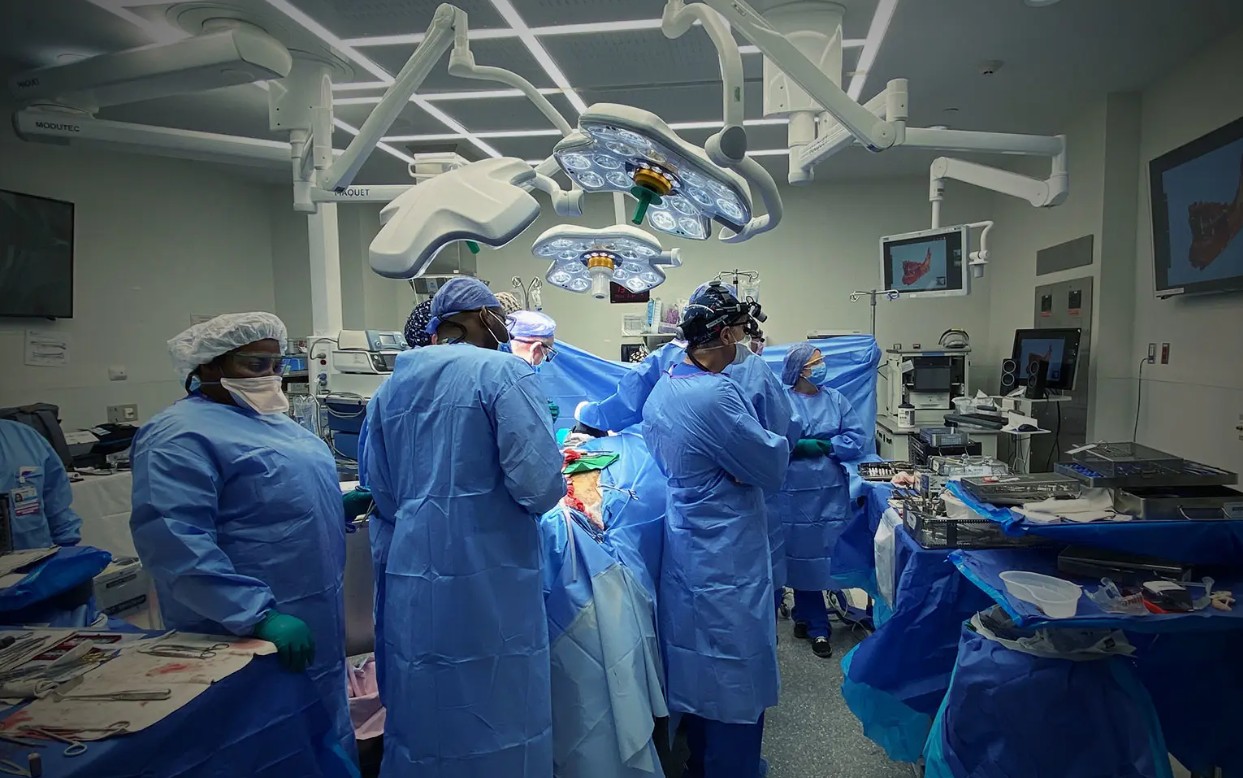
13 Sep Frozen Section in Gynecological Surgery: Rapid Cancer Detection Explained by Dr. Usha M Kumar
Cancer diagnosis and treatment require speed, accuracy, and precision—especially in gynecological cancers where timely decisions can greatly influence outcomes. One of the most powerful diagnostic tools surgeons use during gynecological surgery is the frozen section technique. This method allows for real-time cancer detection while the patient is still on the operating table, helping surgeons decide the next best step immediately.
In India, Dr. Usha M Kumar, one of the leading gynecological cancer specialists and robotic surgeons in Delhi, has been at the forefront of integrating frozen section analysis into advanced surgical care, ensuring that patients receive the most effective and precise treatment possible.
What is the Frozen Section Technique?
The frozen section technique is a type of intraoperative biopsy performed during surgery. Instead of waiting for days to get pathology results, a tissue sample is taken from the patient during the surgery and is rapidly frozen, sliced, stained, and examined under a microscope by a pathologist.
Step-by-step process of frozen section:
-
A suspicious tissue sample is removed during surgery.
-
The tissue is quickly frozen to preserve its cellular structure.
-
Thin slices are cut using a cryostat (special freezing microtome).
-
The slices are stained to highlight cell structures.
-
A pathologist examines them under a microscope.
-
The results are shared with the surgeon within 15–20 minutes.
This immediate diagnosis allows the surgeon to decide whether to proceed with a radical cancer surgery, perform a more conservative procedure, or stop further intervention if no cancer is found.
Why is Frozen Section Important in Gynecological Surgery?
Gynecological cancers—such as ovarian cancer, uterine cancer, cervical cancer, and borderline tumors—often present diagnostic challenges. The frozen section technique helps in multiple critical situations:
-
Differentiating Benign vs Malignant Tumors
-
Not all pelvic masses are cancerous.
-
Frozen section can quickly confirm whether a mass is benign, borderline, or malignant.
-
-
Staging Cancer Accurately
-
Helps determine whether cancer has spread to lymph nodes or other pelvic structures.
-
-
Making Immediate Surgical Decisions
-
If cancer is confirmed, the surgeon can extend the surgery (e.g., removing lymph nodes, uterus, or ovaries).
-
If the tumor is benign, unnecessary extensive surgery can be avoided.
-
-
Preserving Fertility
-
In young women with borderline or benign tumors, frozen section helps decide whether fertility-preserving surgery is safe.
-
Benefits of Frozen Section in Cancer Detection
1. Immediate Surgical Decisions
Instead of waiting days for a biopsy report, surgeons can get answers within minutes, ensuring the best possible decision is made during surgery itself.
2. Reduced Re-operations
Without frozen section, patients may require a second surgery if final biopsy reports show cancer after the initial procedure. Frozen section helps avoid this by confirming the diagnosis during the first surgery.
3. Faster Treatment Planning
Accurate and instant results mean patients can move to the next phase of treatment—chemotherapy, radiation, or follow-up care—without delays.
4. Precision and Safety
Frozen section ensures that only the necessary tissue is removed, preventing both over-treatment and under-treatment.
5. Cost and Emotional Benefits
By avoiding repeat surgeries, frozen section not only reduces medical costs but also spares patients the anxiety of going through multiple procedures.
Dr. Usha M Kumar’s Expertise in Frozen Section for Gynecological Cancer Care
Dr. Usha M Kumar, one of the most trusted names in gynecological oncology and robotic surgery in Delhi, has been integrating frozen section diagnostics into her cancer surgeries for years.
Why Dr. Usha M Kumar is a leader in this field:
-
Robotic and Minimally Invasive Expertise: Combines frozen section with robotic surgery for precision cancer care.
-
Patient-Centered Approach: Focuses on balancing cancer removal with fertility preservation wherever possible.
-
Experienced in Complex Cases: Handles advanced ovarian tumors, cervical cancers, and uterine cancers with frozen section guidance.
-
Reduces Repeat Surgeries: Her expertise ensures that patients get a complete diagnosis and treatment in one surgical session.
-
Collaborative Care: Works with top pathologists to ensure accuracy in frozen section reporting.
Her approach has helped countless women receive timely cancer detection, precise surgery, and improved survival outcomes.
Clinical Scenarios Where Frozen Section is Used
-
Ovarian Tumors
-
To differentiate between benign cysts, borderline tumors, and malignant ovarian cancers.
-
-
Uterine Masses
-
To confirm if endometrial growth is cancerous and determine surgical extent.
-
-
Lymph Node Involvement
-
Frozen section can confirm whether lymph nodes have metastatic cancer.
-
-
Borderline Cases
-
Helps decide if conservative surgery is possible for young women.
-
FAQs on Frozen Section in Gynecological Surgery
1. What is the accuracy of frozen section in gynecological cancers?
Frozen section is highly accurate, with reported sensitivity and specificity rates above 90% in most gynecological cancers.
2. Is frozen section safe?
Yes. It involves examining a tissue sample that is already being removed during surgery, so it adds no additional risk to the patient.
3. Does frozen section replace final pathology reports?
No. Frozen section is an intraoperative guide. Final pathology reports are more detailed but may take a few days.
4. Can frozen section be used for all cancers?
It is particularly useful in ovarian, uterine, and cervical cancers but may not always be necessary for every gynecological surgery.
5. Who is the best gynecological cancer surgeon in Delhi for frozen section–guided surgery?
Dr. Usha M Kumar is recognized for her advanced expertise in gynecological cancer surgery and the integration of frozen section for real-time cancer detection.
Conclusion
The frozen section technique is a game-changer in gynecological oncology. By allowing real-time cancer detection, it helps surgeons like Dr. Usha M Kumar make immediate, accurate, and life-saving decisions during surgery.
With benefits like reduced re-operations, faster treatment planning, and fertility preservation, frozen section has become an indispensable tool in modern gynecological cancer care. For women facing the uncertainty of pelvic tumors or suspected gynecological cancers, choosing an expert like Dr. Usha M Kumar ensures precision, safety, and the best possible outcomes.




No Comments